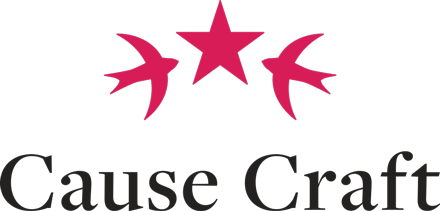November 28, 2017 marks the 6th year of #GivingTuesday, a global day of giving that has seen more than 40% year-over-year growth for the past 3 years. In other words, that new idea called #GivingTuesday? It has hit its stride, both with individuals who see their gifts of time and money as part of their holiday contributions and also with organizations that now treat #GivingTuesday (GT) as the official kickoff of year-end fundraising.
But, of course, no ask is ever just a single-day affair. Although most orgs measure their campaign success based on a one-day goal, how you fare on #GivingTuesday is actually the result of weeks, even months, of pre-messaging, leading your supporters to the obvious conclusion that they can’t not support your world-changing work.
So how do you craft your #GivingTuesday content strategy, from the before storytelling to the day-of asks to the after touchpoints that lead to year-end? Come along, dear readers, for some ideas and best practices.
Countdown: The Before
Start the story long before the ask.
You’ve heard this one before. Single-day giving campaigns do best when they’re preceded by carefully sequenced, related, multi-channel messages prior to a fundraising drive or push. However, I’m talking here about more than a “save the date, we’re going to ask you for money, aren’t you excited?” email for the 7 days leading up to GT.
Instead, why not try a countdown campaign that delivers real value through stories and impact statistics? For example, in mid-October, you could begin a “Six Weeks til #GivingTuesday” push with a mix of education and impact messages, leading to your most spectacular statistic, infographic, photograph, or personal story delivered along with the ask on 11/28. Or you might try a gratitude series tied to the US Thanksgiving holiday, which offers the chance to profile your program staff sharing brief, compelling quotes or stories about how their work has made a difference. A mix of different types of content at regular intervals, tied together with an overarching theme or message, will provide your audience with multiple ways into your work — warming up prospective GT donors for the role they can play in supporting you.
Know your audience.
Unlike most other year-end fundraising campaigns, #GivingTuesday can be a prime opportunity to acquire new supporters. One of the goals of the GT movement is to help consumers shift to thinking of themselves as philanthropists, even if they’ve never supported a cause in the past. To that end, GivingTuesday.org offers both local and national nonprofits the chance to host events and spotlight their work. The goal is to raise each organization’s profile with would-be supporters who are inclined to give but aren’t sure to whom or how.
In terms of GT donors, this means that your donation touchpoints — asks via email, your website, and social media, as well as donation forms and thank-you pages/messages — need to offer a context-sensitive, stage-specific introduction to your organization and your cause. This doesn’t mean that you need endless variations of ask messages, but that you can’t assume all donors will understand either the problem you’re trying to solve or your unique approach to addressing it. GT as a global fundraising drive is an unique opportunity to introduce the case for your amazing work, at least briefly, to a new audience, and to build on the existing relationships with donors who are already committed to your cause.
Showtime: The Day Of
#GivingTuesdayOffer multiple ways to give.
Warning: I’m about to commit fundraising heresy.
While every organization wants monetary donations from #GivingTuesday, sometimes the best way to acquire and engage new donors is actually other methods of giving, which draw supporters close to the work and make them more receptive to your upcoming year-end asks. Gifts of time, in-kind goods, donations of blood or tissue, signing up to join your organization’s board, taking an advocacy action, even taking a survey — whatever you have to offer in addition to a financial ask, this is the time to put it out there.
(Why this is heresy: Professional fundraisers will tell you not to dilute your message, which is sound advice, particularly for The Big Ask on GT morning. However, providing other ways to give in advance, on the day of, and in follow up to a financial gift communicates that there is a place for each supporter in multiple aspects of the work — not just the role of money-giver. Incidentally, the #GivingTuesday Landing Page has a great list of resources.)
The financial ask is another place to diversify your gift offer. It has become an industry-standard best practice for orgs to offer a gift match for some or all of the day, if you can find a major donor or company willing to match. What I’d also like to see more of is organizations getting creative with other types of GT offerings that match the philanthropic holiday spirit: getting a jump on holiday gifts with in-honor-of donations, gift catalogs with either real or virtual gifts, company matches, memorial gifts in honor of those who have passed away in the past year. Any one of these existing gift programs can also be specially packaged or promoted for #GivingTuesday, with a tailored goal: “This #GivingTuesday, help us provide 50 goats to a village in need!” Or pick something wholly new and try it for one day to see how it resonates with your audience.
Turn on a dime, as needed.
As with any time-delimited giving push, you can learn a lot about your supporters and your campaign methods in a short period of time. The best response to either stunning GT success (yay!) or failure (regrettable, but it happens) is to be prepared to turn on a dime, mid-campaign. The words “we can end this pledge drive early!” might ring a bell, and indeed, being prepared with several tacks and messages based on how the day is going will help your staff to pivot accordingly.
In the case of stellar results, well done! Last year, one large animal-welfare organization exceeded their goal early enough to cancel their third planned ask email. Instead, they opted to send a heartfelt, evocative thank-you note to their whole list. While they could likely have wrung out additional gifts from their file, they communicated a powerful message in taking a breath and genuinely thanking supporters, especially prior to beginning the next strong push in December.
For less-than-desired results, be ready to shift mid-day into another approach. Perhaps you have a celebrity spokesperson who’s willing to make the ask for you, waiting in the wings. Or a back-up match offer to triple, rather than double, the gift. Or a sustaining donations ask with smaller monthly ask amounts — offering a different kind of commitment altogether. Even pivoting to a smaller one-time gift ask allows you to potentially hook additional gifts that become the basis for bigger asks in the month, and year, to come.
No Rest: The After
Use the data to fine-tune EOY messaging.
Now, it’s time for a deep breath to take stock of what you learned from your campaign. Did any pre-messages leading up to GT perform particularly well? If you sent multiple messages on the day of, which asks performed the best? How did each channel you might have used — website, social, email, advertising, in-person promotion at volunteer events — uniquely drive donations? For message and campaign strategy, we’re always looking to track supporter behaviors as a way to understand our audience’s greater attitudes, motivations, and goals.
An important long-term goal is to get all of this data into one central CRM like Salesforce, so that you can track donor behavior across channels and campaigns. However, most orgs haven’t achieved the one-database view of their supporters just yet. Regardless, it’s still worthwhile to give yourself a Wrap-up Wednesday. Take a much-needed post-GT breather to cobble together any performance data that you do have, looking for all insights that might inform your end-of-year plans.
Though you’ll have to shift tacks quickly after #GivingTuesday, and though you’re unlikely to re-engineer your year-end plans completely in a couple of days, there’s still tremendous opportunity to learn from the GT data, helping you optimize for the final sprint.
Be ready with a value-added ask again.
While it’s advisable to automate as much of the pre-GT messaging as possible, it becomes critical on the day of and the days that follow to have a segmentation strategy and a marketing automation program in place. Do you know what you’ll say to each profile of supporter who donated time or money, based on the action they took and how new (or not) your relationship with them is? How will you appropriately thank them and show them the value of their gift? And most importantly, what value are you going to offer each group before you make the next end-of-year ask?
For those golden, brand-new supporters that GT might bring in, you have a big job to do quickly. Your communications need to rapidly thank them and initiate them to your organization — who you are, how you’re different, and how their gift is directly making an impact. And you need to do this more quickly than you might at other times of year. Consider offering interim, lower-bar asks that allow you to learn about them, such as a survey, a quiz, or an action opportunity, before they enter your year-end appeal stream.
For your established donor base, a GT donation follow-up is the time to translate how their gift makes an impact (or allows you to do more world-changing work) and to roll into a preview of your plans for 2018.

